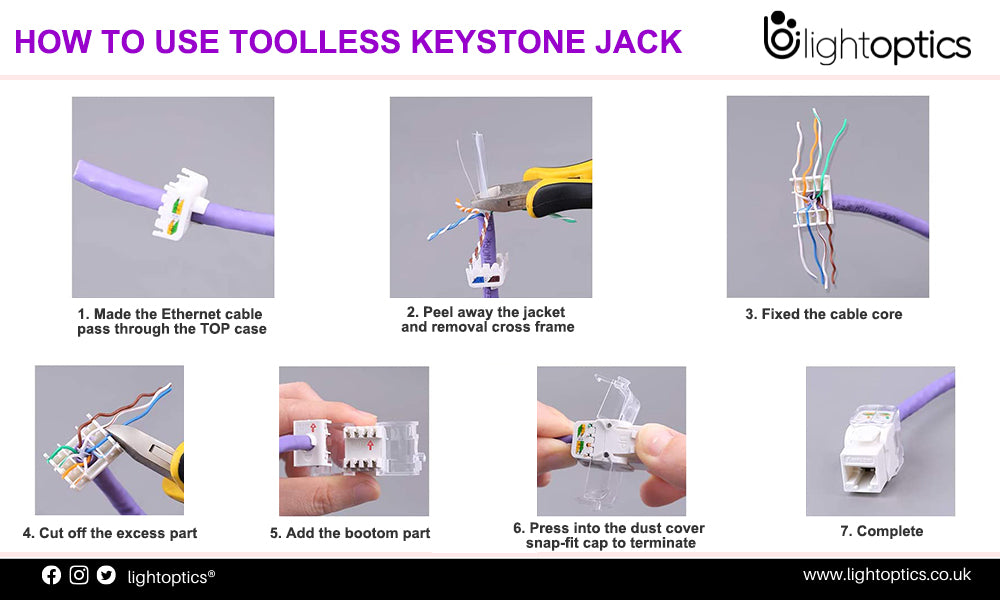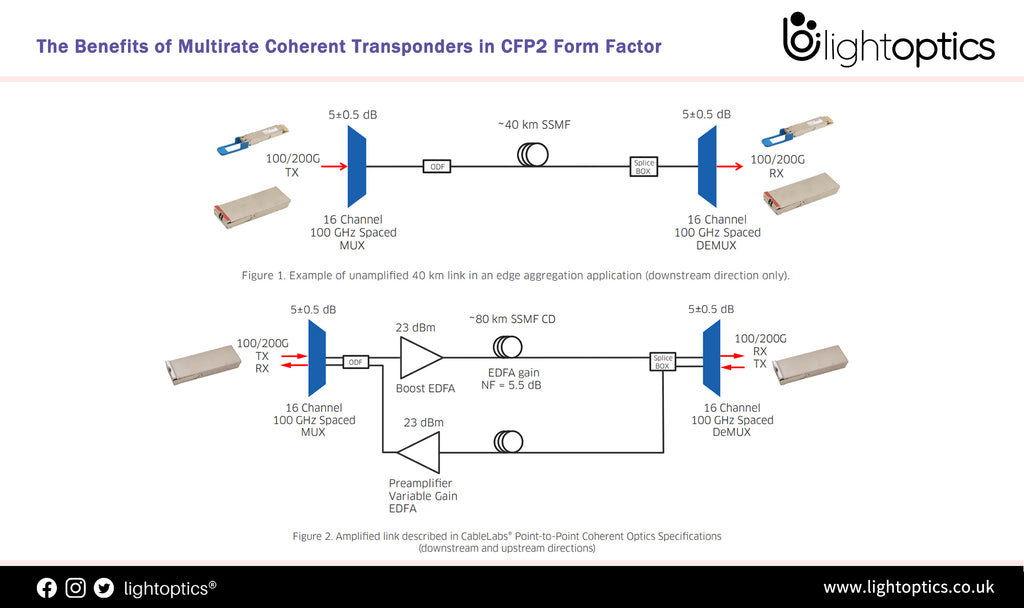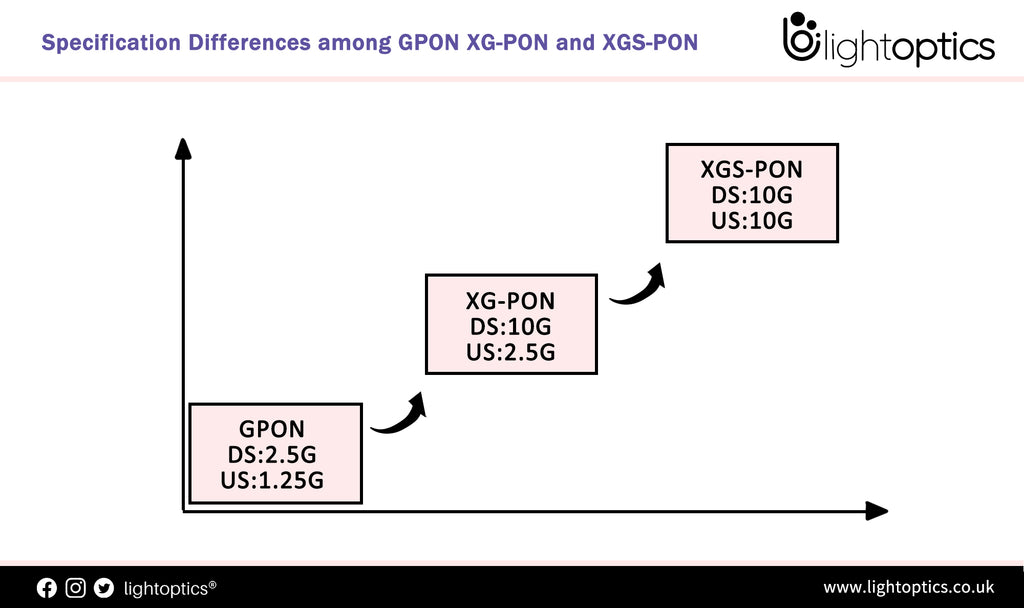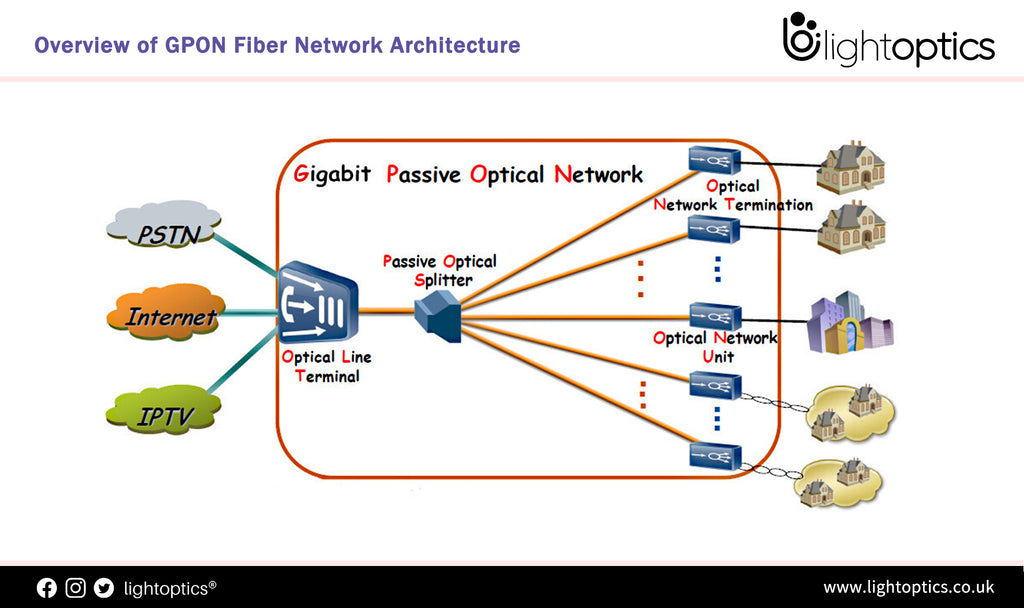-
How to Use Toolless Keystone Jack
Ethernet cables like Cat5e, Cat6 and Cat 6a are widely used to connect devices on local area networks such as computers, routers and switches. DIY for your home network is a trend in the IT community, and also worthy to try for those non-professionals.In most successful connections with Ethernet cables, keystone jacks that connect a device to a network port play an important role.... -
The Benefits of Multirate Coherent Transponders in CFP2 Form Factor
The exponential growth of content delivery and enterprise cloud service delivery, combined with the promise of future 5G wireless-based services for consumers, the IOT, and connected vehicles worldwide, will create unprecedented increases in network traffic across all access, edge, and core networks. To meet the imperative need for higher capacity and providing the best user experience, the operator and product development communities must accelerate roll-out of the... -
MTP VS MPO : All Basics You Need to Know
What is an MPO Connector? MPO stands for Multi-fiber Push On, or MPOs for short, are fiber connectors comprised of multiple optical fibers.. This connector was developed in the late 1980’s by Japan’s Nippon telegraph and telephone corporation (NTT). While defined as an array connector having more than 2 fibers, MPO Connectors are typically available with 8, 12 or 24 fibers for common data center... -
Specification Differences among GPON XG-PON and XGS-PON
With telecommunication development these years, GPON has evolved to XGPON and XGS-PON step by step. PON has become the mainstream technology of FTTx network construction, but with users’ strong demands for high-bandwidth such as OTT Video and 4kTV, commercial use of 10G GPON has been put on the agenda by many operators. Moreover, from the perspective of technical standards and industrial chain development, 10G... -
PON Network: Understanding OLT, ONU, ONT and ODN
Fiber to the Home (FTTH) has started to be taken seriously by telecommunication companies around the world, enabling technologies to develop rapidly. Active optical networks (AON) and passive optical networks (PON) are the two major systems that make FTTH broadband connections possible. Unlike active optical network, PON network does not require electrical power to send signal to customers, becoming the technology of choice of telcos. The... -
Overview of GPON Fiber Network Architecture
Passive optical networks (PON) technology was available in the middle of 90s, is the highest speed, longest life, lowest cost network infrastructure available in the market, offering a genuine future‐proof access network with flexibility and upgrade capability well into the future. Since the huge development of network, various standards have been established and matured. PON developed from the first ATM PON (APON) and then evolved... -
Fiber Optic Pigtail: Types and How to Splice It?
In fiber optic cable installation, how cables are attached to the system is vital to the success of network. If done properly, optical signals would pass through the link with low attenuation and little return loss. What is Fiber Optic Pigtail? A fiber pigtail is a single, short, usually tight-buffered fiber optic cable with a factory-installed connector on one end, and un-terminated fiber on... -
Simplex vs Duplex Fiber Optic Cables
Simplex vs duplex fiber optic cables what are they different? It is known to all that fiber optic cable is made of glass or plastic that mainly used for transmitting information. Fiber optic cable can be divided into many types according to different classification principles, such as source, mode, usages etc. Different kinds of fiber optic patch cables have different applications. This paper will focus on... -
Twisted Pair Cables Cabling for Ethernet Network
Twisted pair copper cabling is the most ubiquitous for Ethernet network and telephone installations. But how much do you know about twisted pair cable? What makes it different from other cables and how many types of twisted cables are there? What is Twisted Pair Cables? Twisted pair cabling consists of two conductors of a single circuit, twisted together. By twisting the wires, some part... -
Optical Amplifier is a Key Technology for Restoring Signals
Introduction To Optical Amplifiers Optical amplifiers, as the key technology for optical communication networks, have made it possible to transmit many terabits of data over distances from a few hundred kilometers and up to transoceanic distances with wavelength-division multiplexing (WDM) technology, which allows the transmission of multiple channels over the same fiber. The transmission distance of any optical fiber communication system is eventually limited by...
Customer Service: sales@lightoptics.co.uk
Shopping Cart
0
Close
Your Cart
Your cart is currently empty.




























